Wondering what is causing that scraping noise from under your car while you’re driving? You’ve come to the right place, for we have researched this question, and we have the answer for you.
Here are the most common sources of scraping noise from the wheel area when you are driving:
- A worn dust shield coming into contact with the brake rotor will cause a scraping noise
- Worn or failing brake parts
- Loose brake pads will not go back to their normal position
- Parts from a faulty ball joint
- A faulty CV joint can create a knocking noise from the front of your car
Read the sections below where we discuss these possible causes in greater detail. We will also talk about how to fix these issues. Read on!
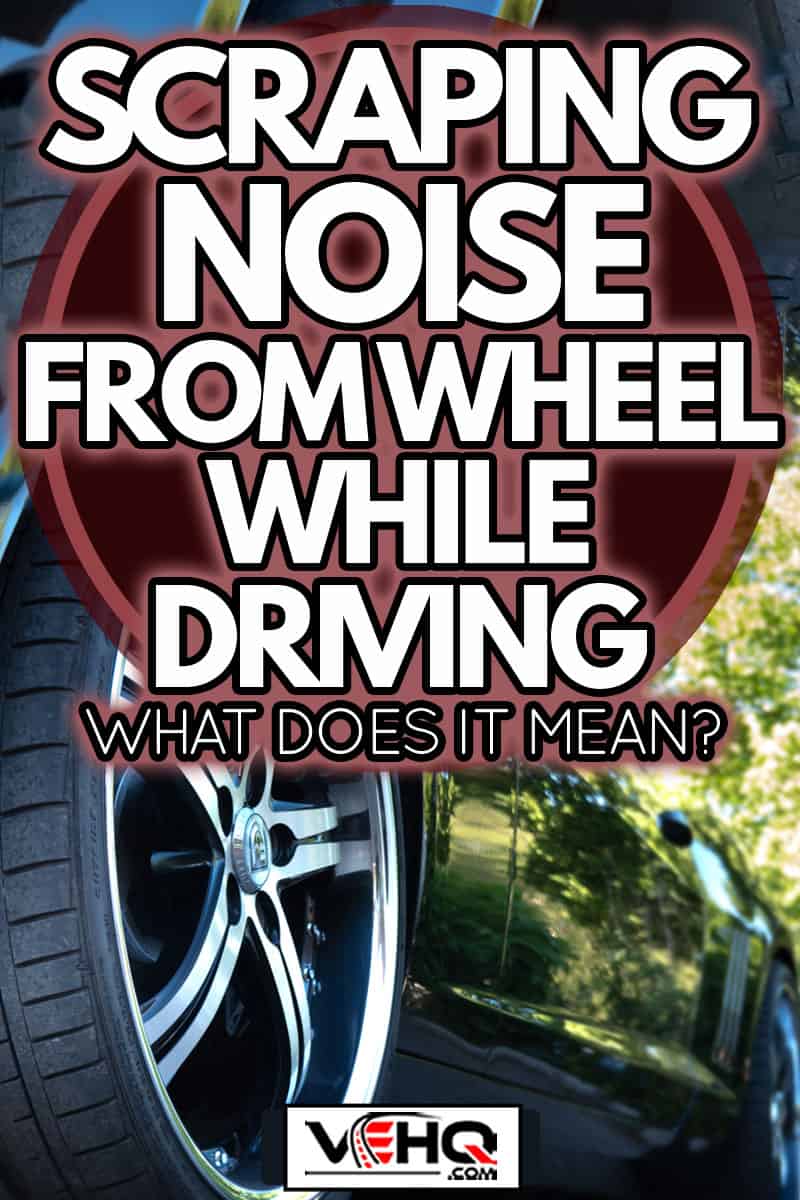
Worn Brake Dust Shield Scraping Sound
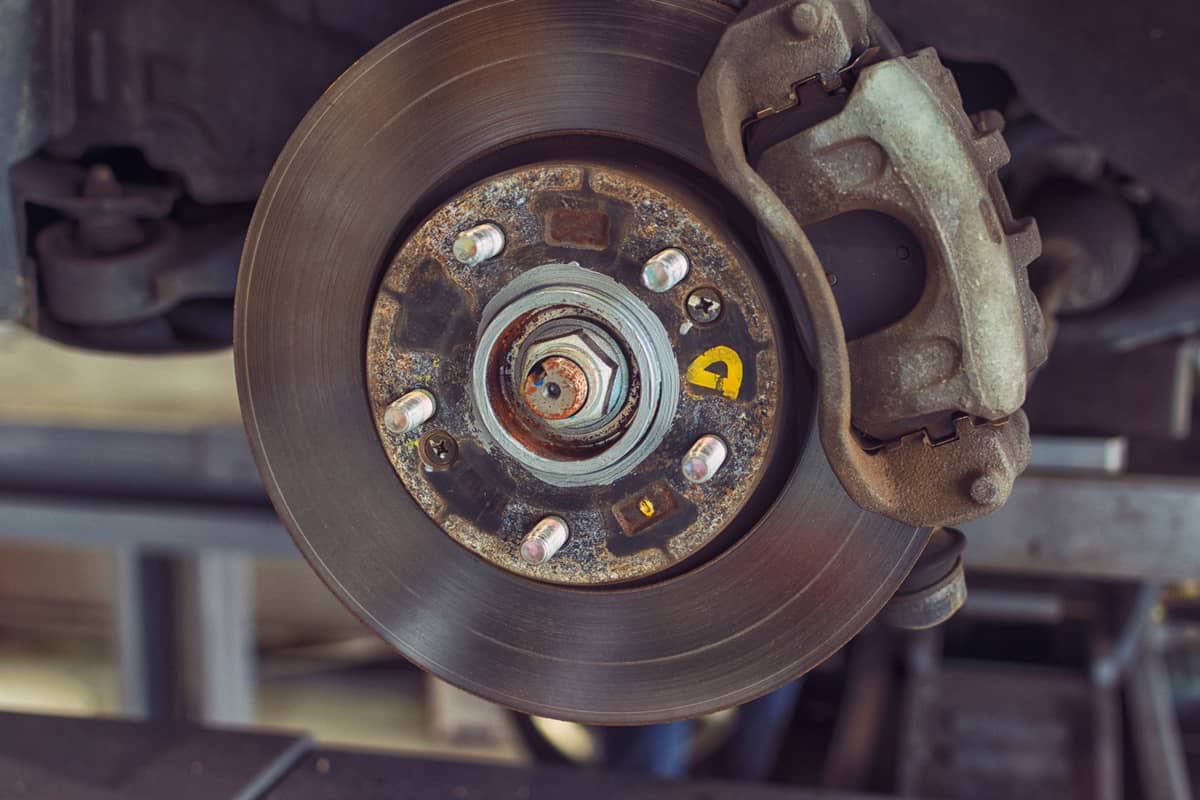
The brake dust shield is a lesser-known component of your car's braking system. It is responsible for keeping the extreme heat generated from braking from getting to the suspension and the drivetrain.
Additionally, it protects the brake rotors, calipers, and pads from mud, rocks, and water that can negatively affect the performance of your braking system.
The brake dust shield looks like a thin sheet of metal between the shield rotor and the wheel axle just behind the brake rotor. A build-up of rust or mud can force the brake dust shield to come into contact with the brake rotor.
Inspect the brake dust shield
Here are the steps to follow to inspect the brake shield:
- Raise your car high enough so you can remove the wheel.
- Remove the wheel from the wheel area that you will inspect. Set aside the nuts from the wheel.
- Remove the brake caliper and set aside the nuts and bolts so you can identify and reinstall them later.
- Uninstall the brake rotor and set it aside.
- Raise your car a little bit more to give you a comfortable space to get under the wheel area.
- Slide under the wheel area with a lamp to inspect the brake area.
- Check the inside of the brake dust shield for signs of scraping. A fresh scrape is an area of the brake dust shield that looks smoother than the rest of its surface.
Whenever you’re cornering, there is a small amount of movement from the bearing that can push your brake rotor inward. If your brake dust shield is loose or misaligned, the brake rotor will rub against the inside surface of the brake dust shield whenever you’re cornering.
A buildup of rust can also cause your brake dust shield to swell a little and start to scrape against the brake rotor. Any scraping on the inside surface of the brake dust shield is a sign that it is loose and is rubbing against the brake rotor.
Brake Dust Shield Rubbing: How to Fix It
- Use a flat head screwdriver to gently push the brake dust shield away from the brake rotor. Give it a good clearance away from the brake rotor but not too much. Keep in mind that the brake dust shield keeps water and debris from getting between your brake caliper and your brake rotor.
- Reinstall the brake rotor to check if the clearance between the brake dust shield and the brake rotor is wide enough.
- Reattach the brake calipers.
- Reinstall the wheel and lower your car.
- Test your car if the scraping noise has gone away.
Do Bad Brake Pads Make Noise?
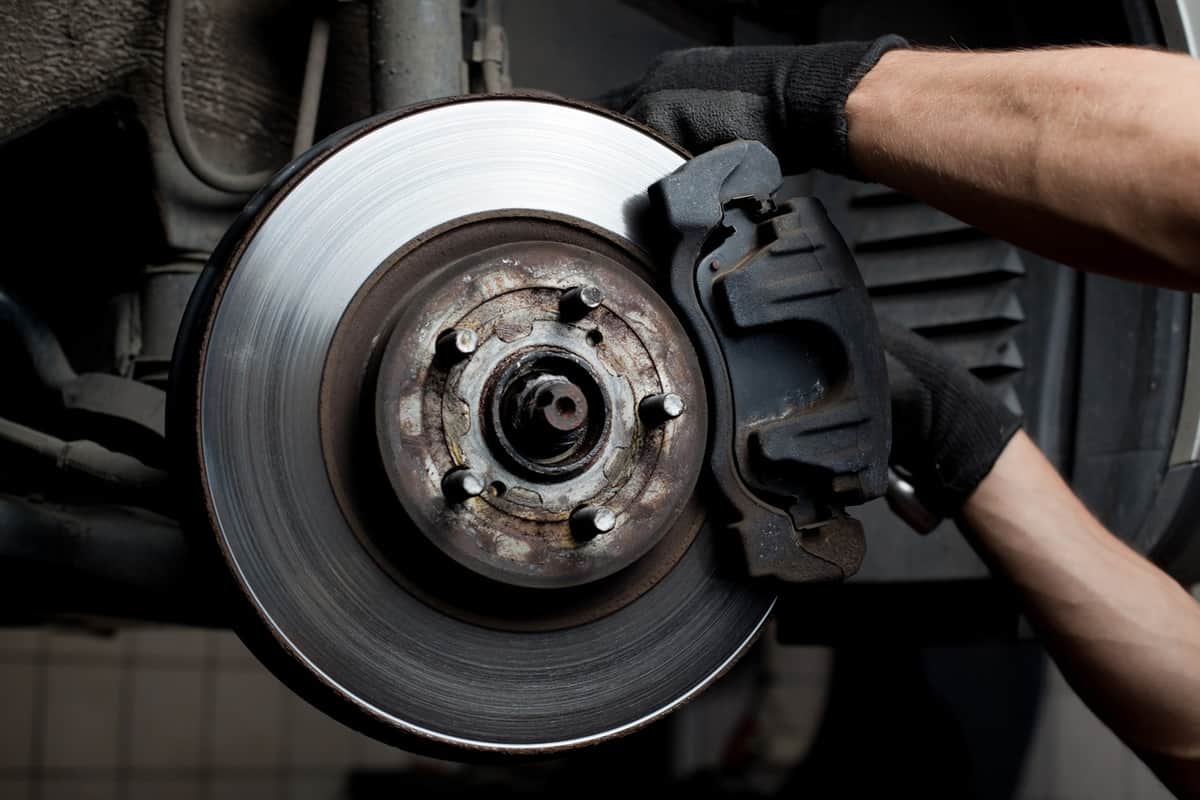
The calipers will start to grind against the brake rotor once the brake pads are too worn out. This creates an uneven surface on your brake rotor. When you step on your brakes, the uneven surface will cause a thumping or scraping sound.
Replacing the worn-out brake pads should get rid of the scraping sound. Brake pads that are an eighth of an inch or less should be replaced.
If you’ve never replaced your brake pads before or you’re not comfortable replacing them, have a mechanic replace them for you.
How to replace brake pads?
Here are the simple steps to follow to replace your brake pad.
- Follow steps one to two from the previous section to get to your brake calipers.
- Unscrew the slider bolt at the bottom. This is usually found at the back of the brake caliper.
- Loosen the slider bolt on top.
- Slide the brake caliper upwards with the top slider bolt serving as the pivot. Slowly slide the brake caliper so that you do not end up pulling on the hydraulic brake lines too much.
- At 1/8-inch thickness pads, the metal tabs that indicate the wear of the brake pads are close to touching the brake rotors.
- Slide the old brake pads out.
- Clip the new brake pads on.
- Remove the old retaining clip. Most new brake pads come with a new retaining clip. Snap the new retaining clip in place.
- Apply a graphite-based grease on the retaining clips of the new brake pads. This will prevent squeaking noise. Most new brake pads come with a small sachet of graphite-based grease.
- Slide the new brake pads into place.
- Push in the brake pistons. This is to give enough clearance for the new brake pads to slide in. Keep in mind that you need to push all pistons at the same time. Some cars have only one brake piston, while some have two or three. Pushing only one will pop the other out.
- Slide the brake caliper back into place.
- Reinsert the slider bolt and tighten it. Tighten the top slider bolt.
- Mount the wheel and tighten it.
- Repeat the same process on the opposite wheel. Keep in mind to monitor the brake fluid level. Pushing the brake pistons also pushes the brake fluid back to the reservoir. Drain some of the brake fluid out of the brake fluid reservoir if it looks like it will overflow when you push the second set of brake pistons.
Can Loose Brake Pads Cause Noise?
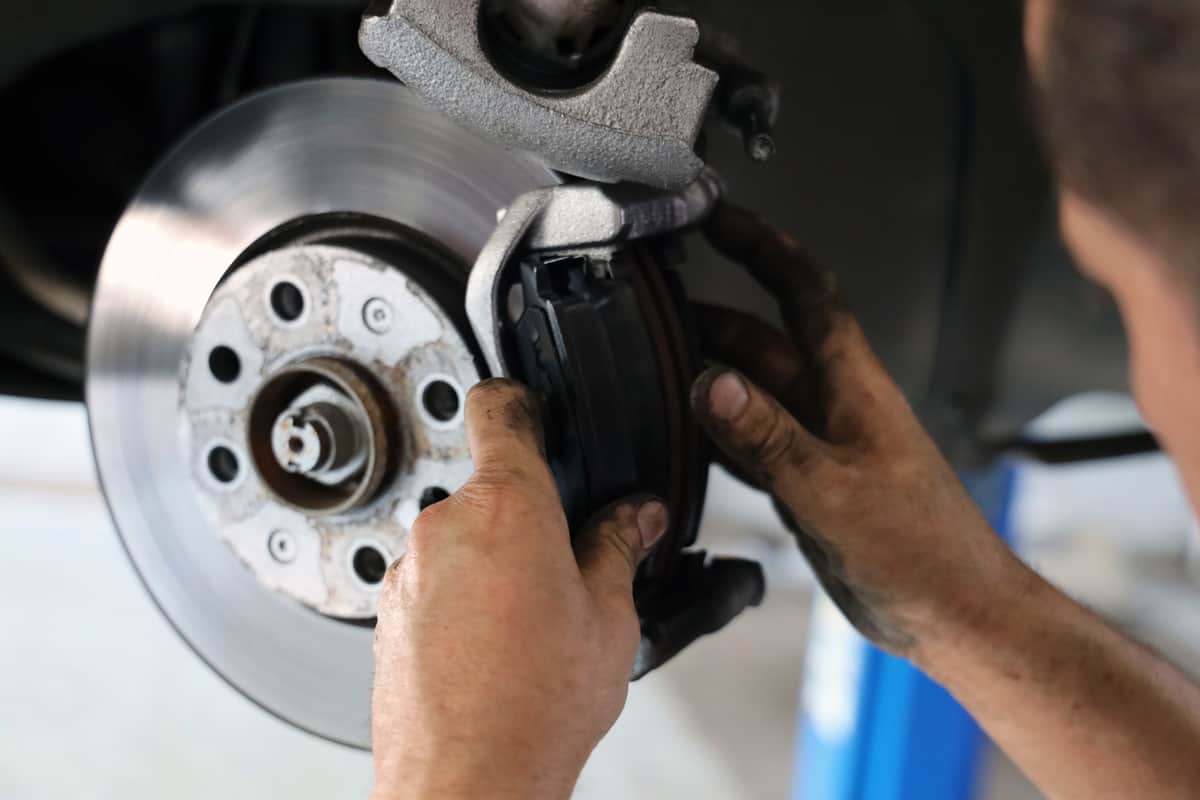
Sometimes, part of the worn-out brake pad will get detached and will scrape against the brake rotor while you’re driving, causing a scraping noise. The brake pad can also come loose once the retaining clips have come loose.
Follow the steps above to get to the brake pads and check the retaining clips. Reposition the loose brake pad on the retaining clip to prevent it from scratching against the brake rotor.
Can Bad Ball Joints Cause Grinding Noise?
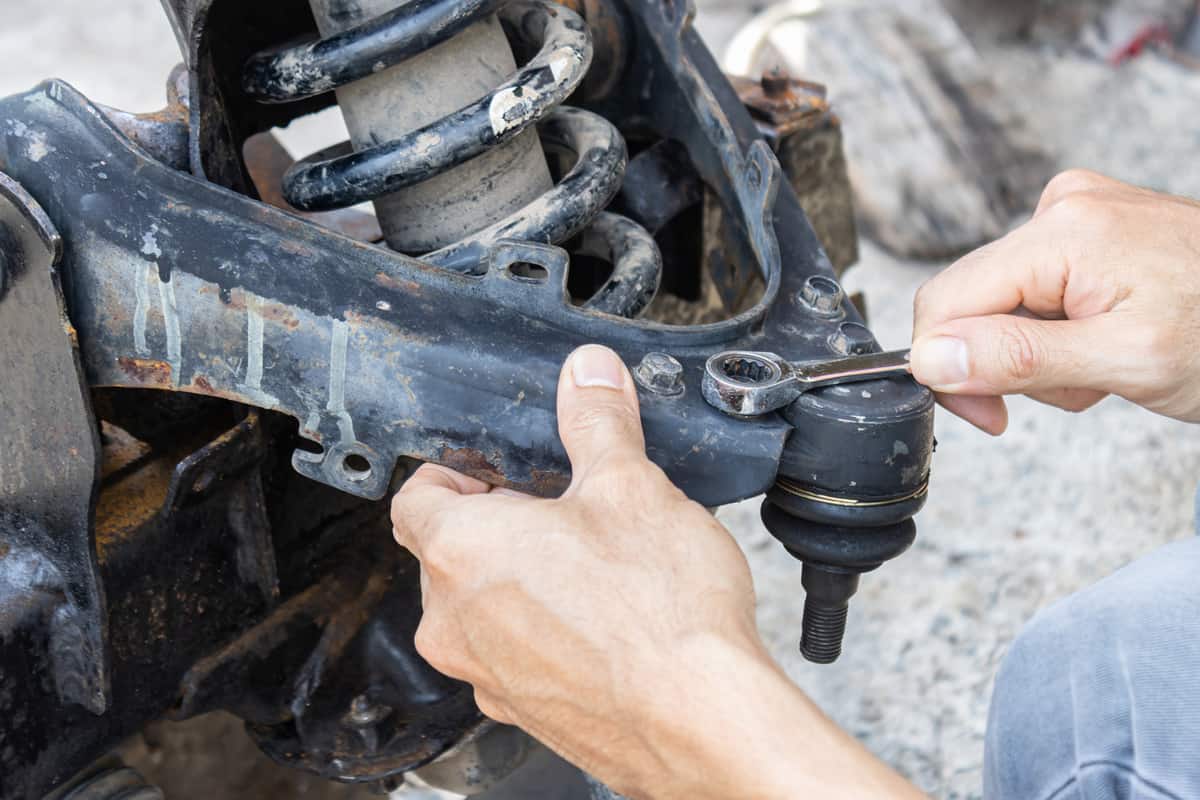
A ball joint is a part of the complex suspension mechanism of the front wheel. This allows your front wheel to move horizontally and vertically as needed.
Ball joints are critical for providing pivoting movement of the front wheel similar to the hip joint of the skeletal system. A faulty ball joint will make it challenging to maintain the vehicle in a straight line.
A ball joint with loose or damaged housing can come off and allow mud, grime, and sand to get into the joint. This will cause a scraping noise as the car moves.
If the ball joint is loose, it will make a clunking noise as it goes in and out of position.
Replacing and checking a ball joint requires a special tool specifically for use on a ball joint. If you do not have these tools, it is best to have a professional mechanic replace the ball joint for you.
Does A Bad CV Joint Make Noise?
Constant-velocity joints or CV joints ensure a constant transfer of power from the transmission to the wheels of your car.
A worn-out CV joint will generate a knocking noise. This noise comes from the inside of the joint on a car with FWD.
Verify a faulty CV joint by accelerating and decelerating. Alternate between forward driving and reverse driving, shifting between accelerating and decelerating your car.
If you hear a knocking sound during this test, then it is a sign of a bad CV joint.
Bring your car to a service center that specializes in transmission problems and have your CV joint checked and possibly replaced.
Conclusion
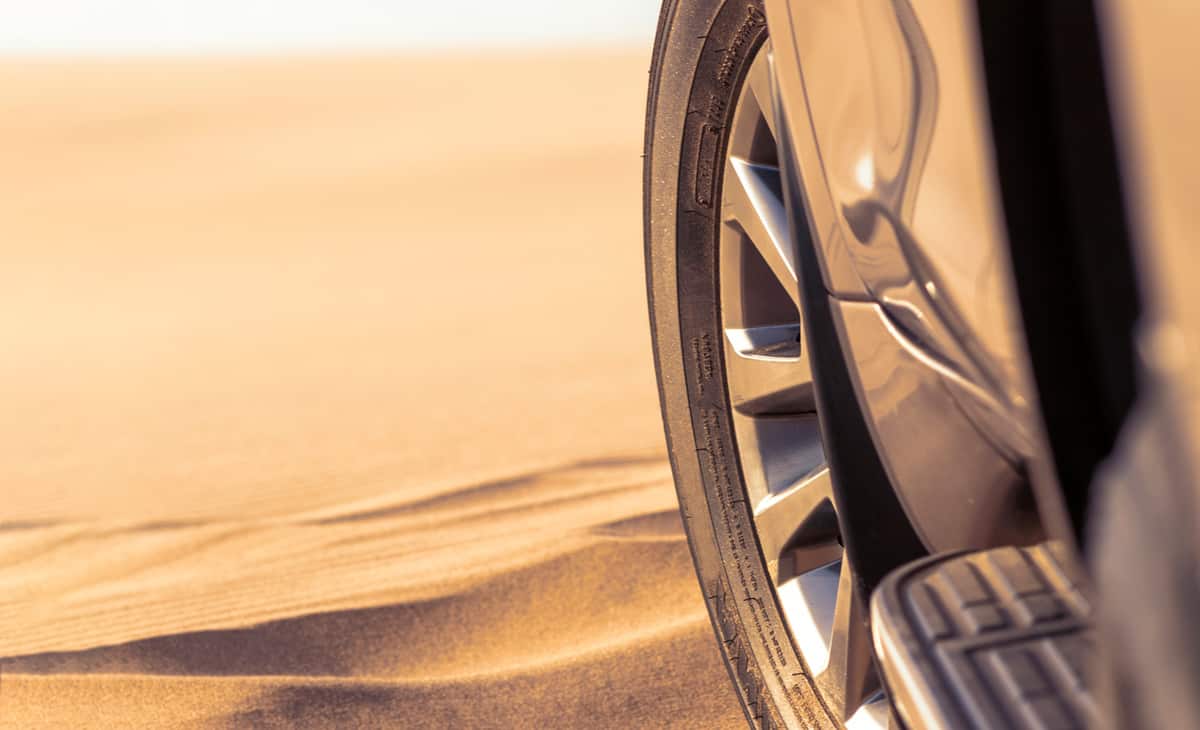
The scraping noise from the wheel area while driving can come from several sources. Each one has a different fix. Some can be DIYed, while some fixes require specialized tools that are not commonly found in a home garage.
If you enjoyed reading this article, you might find the articles below equally enjoyable to read:
